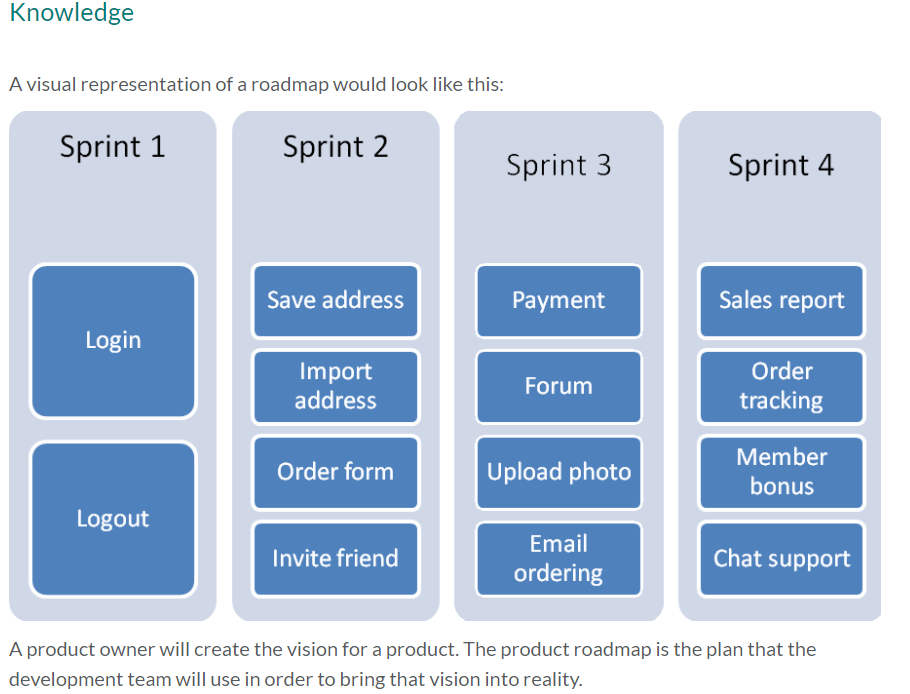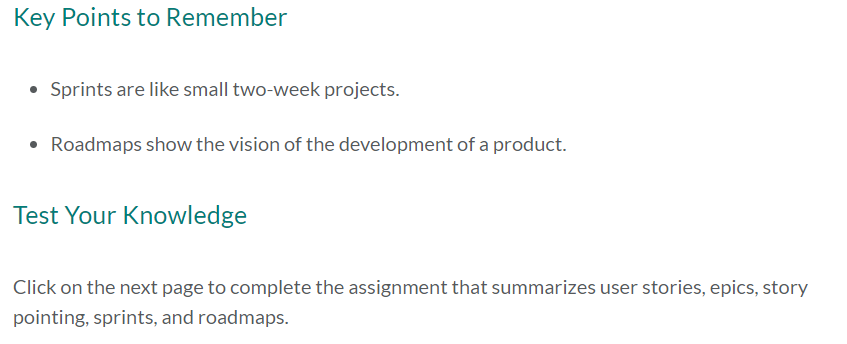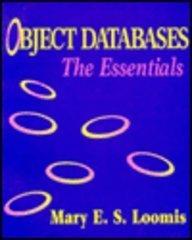Answered step by step
Verified Expert Solution
Question
1 Approved Answer
For the case below do the following: Write 30 user stories Point the user stories Place the user stories into six sprints so that they
For the case below do the following:
- Write 30 user stories
- Point the user stories
- Place the user stories into six sprints so that they are close to equal in size (points-wise)
- Use the attached Scrum Roadmap Template for this assignment

Case
Develop an integrated, multi-user App for Hospitality Industry
Requirements:
Develop a purchase/order platform and mobile app for catering companies that can be used for ordering quickly and efficiently.
Make sure the ordering process from the catalog to invoicing is automated. Allow the buyer to make the order with a smartphone.
Desired features:
-
The app must contain an option for the end-user to create a catalog of the products.
- The user can add products to a sort of order list with the app (its own private catalog of frequently purchased items)
- The user can take a photo of the product and relevant information such as: Add product information (such as choosing a supplier to choose from a list or add a new one), Product Code of Supplier, etc.
- The supplier can add or import a custom product catalog from the existing ERP system on the platform.
- The suppliers catalog is visible to end-users who add the vendor to their own list of vendors.
- The vendor may invite end-users to download the app
- Products from the supplier's catalog can be added to the private user's private catalog.
- In the web application, the supplier can log in to manage their own catalog.
- In the web application, delivery terms can be added by the supplier and may be what they are by the end-user (cafe or restaurant).
- In the mobile app, the end-user can place an order by checking in the catalog the products to be ordered and the quantity (loose or in packing units)
- The status of the order is visible in both the mobile app and the web application
- The supplier has a simple 'order management system' available from which it is possible to manage an order (mini order management system). For example, if a product is out of stock, it can be communicated with the end-user, etc.
- Provides an option to select barcode scanner products.
- Send an e-invoice once an order has been placed and paid. An e-invoice consists of an e-mail with a pdf attachment
- Provides the buyer with multiple options to pay directly online and pay on account.
- Provides the buyer with a summary of purchase invoices.
- Provides the supplier with an overview of all sales and sales invoices.
- Provides the supplier with an efficient solution for processing invoices.
- Offered products can be added to the supplier's catalog. These products are prominently visible.
- In the supplier's catalog, the products that buyers often order are first visible.
- The catalog has an 'explore' mode in which the buyer can "browse" for inspiration
- The catalog has a search/filter function so you can sort products by group
- The buyer/end user's catalog has labels. Labels can be added and managed by the buyer itself
- The app has a message board where messages can be sent to connected vendors.
- The supplier will receive an email with a link to the web application to answer the question. The buyer can also request a call me back request to call back the supplier (if this is set/activated by the supplier)
- Also, important: the buyer can Invite the supplier to use the platform.
- On the platform, an order list template can be created for a supplier by the buyer. This template is used to place the order with a vendor if there is no link with an ERP system
- The supplier then receives an email or fax from the order that the buyer has made. This is sent from the system.
- As a supplier "enters" he/she gets access to a backend system where the orders can be viewed per customer (this is the order management system)
- Create your own user story based on the requirements above.

 Read: https://blog.crisp.se/2008/02/12/mattiasskarin/1202847600000
Read: https://blog.crisp.se/2008/02/12/mattiasskarin/1202847600000

Step by Step Solution
There are 3 Steps involved in it
Step: 1

Get Instant Access to Expert-Tailored Solutions
See step-by-step solutions with expert insights and AI powered tools for academic success
Step: 2

Step: 3

Ace Your Homework with AI
Get the answers you need in no time with our AI-driven, step-by-step assistance
Get Started


